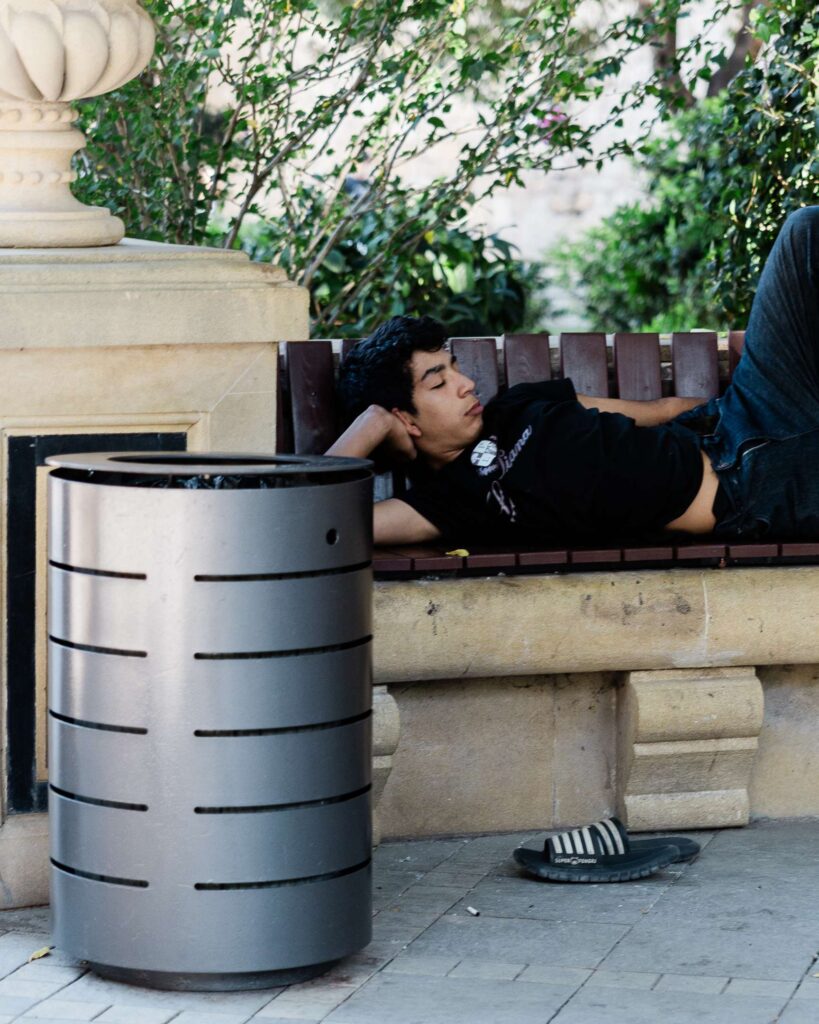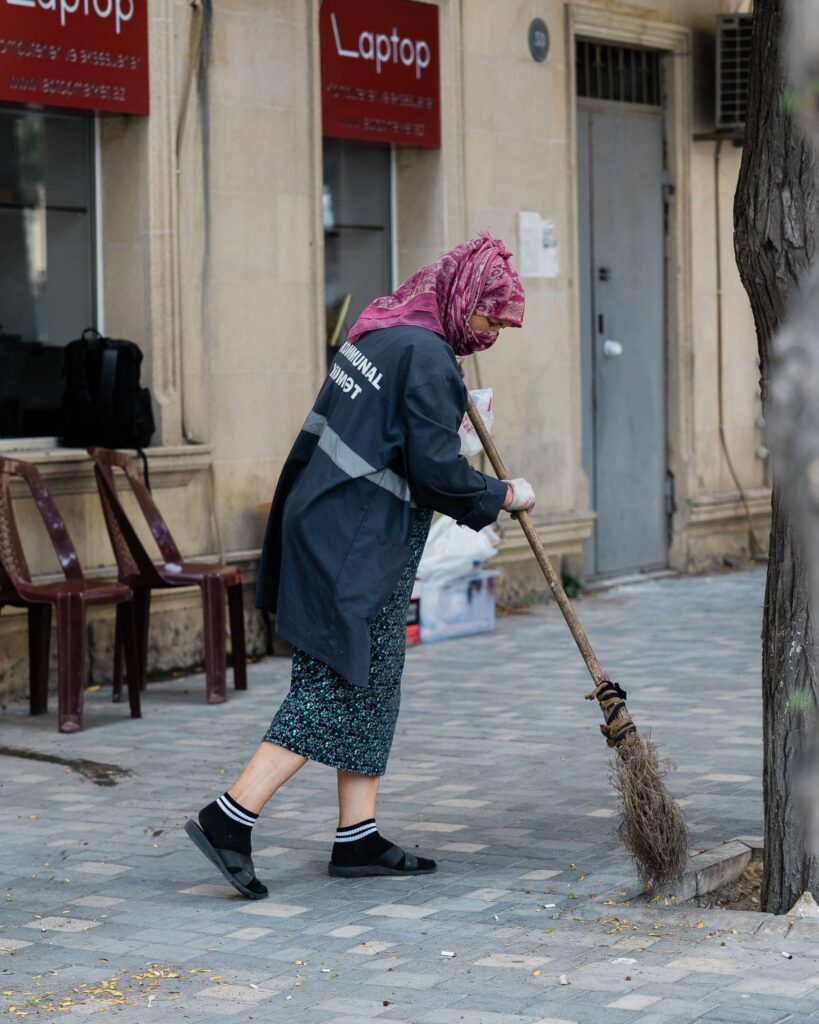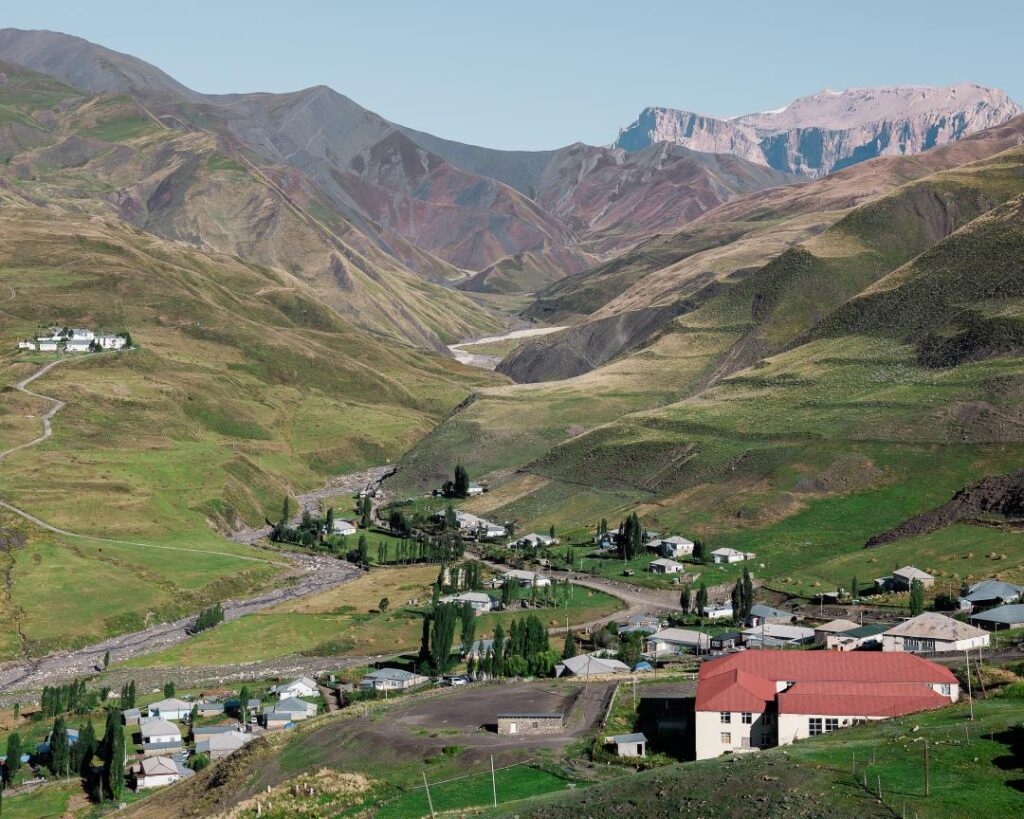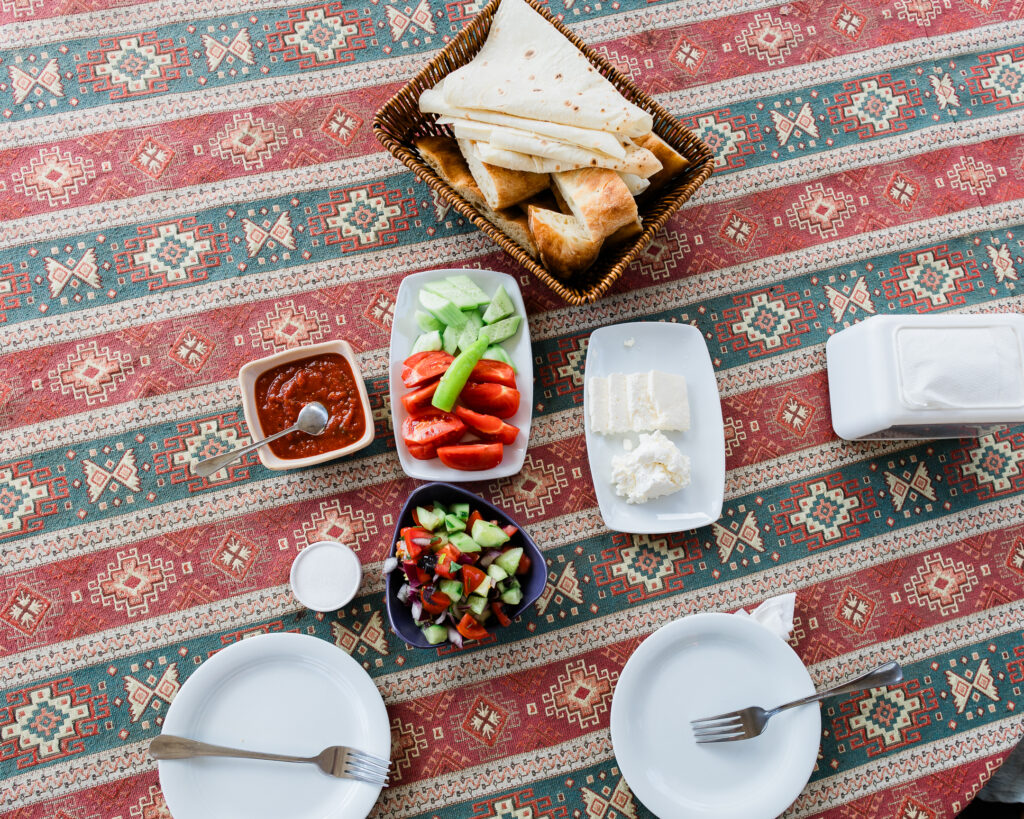Baku City Guide: Explore Azerbaijan’s Capital of Contrasts
Baku. The name itself whispers of ancient empires, fiery landscapes, and modernity that catches you by surprise. Azerbaijan’s capital, nestled on the shores of the Caspian Sea, is a city of exhilarating contrasts. Here, UNESCO-listed medieval walls stand proudly in the shadow of skyscrapers, and Silk Road traditions meet a vibrant, contemporary pulse. This is a city you feel and explore.
Our Baku Vibe
For us, Baku was a delightful surprise, especially in mid-August. While still warm, it was a welcome respite from Dubai’s heat, and the evenings were incredibly pleasant for strolls. What immediately struck us was how walkable and genuinely calm Baku felt, despite its development. It’s a city of seemingly endless parks, inviting you to simply sit and absorb the atmosphere. The blend of Soviet-era architecture with quaint, charming street moments created a unique appeal. It’s bustling enough to feel vibrant, yet possesses a tranquillity hard to find in many modern capitals. Its compact size meant we often found ourselves crossing the same familiar streets.
Our Khinaliq trip was cut short, extending our time in Baku to around 3-4 days. This proved ample time to explore most of the city and get a feel for its rhythm. We genuinely loved just walking everywhere; the city centre is incredibly pedestrian-friendly, and for longer distances, ride-hailing apps like Bolt or the efficient metro system were readily available.
Baku truly offered that perfect blend of city convenience and relaxed holiday spirit we like. It feels safe, with a noticeable police presence, and the locals are wonderfully warm and welcoming. The food scene is fantastic, and there are plenty of cosy coffee shops and bars to unwind in, not to mention a decent nightlife. While some travellers visit for shopping, as Dubai residents, we didn’t find anything that truly stood out from back home, perhaps some deals on seasonal wear.
Ultimately, Baku is often referred to as the ‘Dubai of the Caucasus’. While it shares a modern ambition and a rapidly developing skyline, it’s a distinctly different, less expensive, and more culturally rooted experience.
If you’re looking for a chill city holiday focused on good food, drinks, and a relaxed atmosphere, where you can truly unwind, then absolutely, we recommend Baku! Two to three days is quite sufficient to capture its essence.
What We Loved Most: Food, Walks, and Old City Charm
Our top highlight in Baku? The food, hands down! We indulged in all their traditional options so basically lots of bread, cheese, tender meats, aromatic stews, and flavourful rice dishes. And of course, doners, which were their quick equivalent of ‘Shawarma’. We had one every time we sat down to relax in a park.
We also thoroughly enjoyed our leisurely strolls through the numerous parks, admiring the varied architecture, and getting wonderfully lost within the ancient walls of Icherisheher. It felt like a more Soviet-influenced, historical counterpart to Dubai’s Fahidi district. Plus, Baku is where we truly fell in love with affogatos; they’re incredibly delicious and so much more affordable than anywhere else we’ve tried them!
While this guide will cover all the popular tourist spots (many of which you’ll likely pass by anyway), it’s up to you whether you decide to pay for entry into the ticketed attractions. We’ll also share some hidden gems recommended by locals to give you a truly authentic experience.
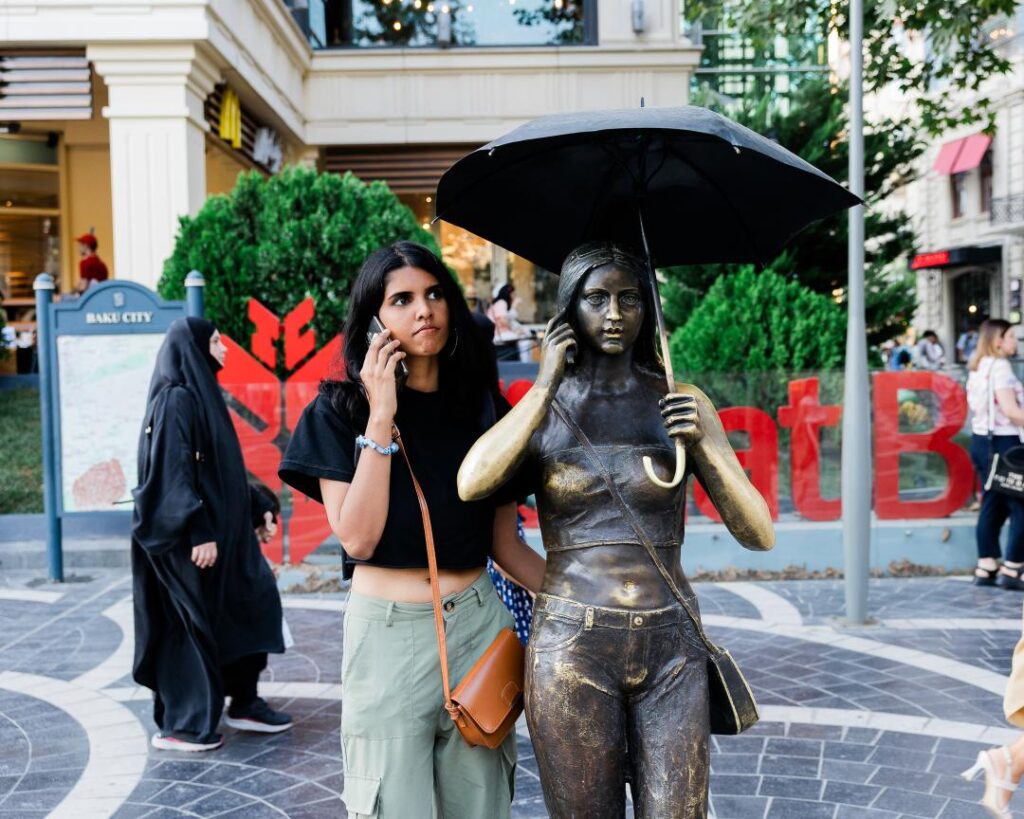
A Brief History of Baku: City of Winds and Fire
The earliest records of Baku, often translated as “the city of God,” date back to the early Middle Ages, with its founding attributed to the 5th century AD. Strategically located along the Great Silk Road, it served as a vital crossroads for migration and trade. While it faced severe damage during the Mongol invasion in the 1400s, its economy swiftly revived. Through centuries, Baku saw shifts in power, becoming part of the Safavid Dynasty, then conquered by the Ottoman Empire, before Persians regained control, eventually ceding to the Russian Empire in the early 19th century. In 1920, it became part of the USSR, finally gaining full independence in 1991. Today, Baku stands as the leading economic and cultural center in Transcaucasia, a vibrant hub of history and modernity. The city’s nickname, “City of Winds,” is well-earned, as its location on the Caspian Sea shore subjects it to strong breezes year-round.
The Unmissable Icons: Baku’s Star Attractions
No trip to Baku is complete without experiencing these landmark sites, each telling a crucial part of the city’s story:
- The Flame Towers: These three iconic skyscrapers, shaped like colossal flames, dominate Baku’s skyline. They are a stunning spectacle, especially at night when their LED facades display mesmerizing light shows, often depicting fire or the Azerbaijani flag. Tip: For incredible photos, head to Upland Park (Dagustu Park) at sunset. As ‘Dubai kids,’ we weren’t awestruck by them, but they’re undeniably a prominent city highlight.
- Heydar Aliyev Center: A true masterpiece of Zaha Hadid’s fluid architectural style, this jaw-dropping cultural center is as impressive on the inside as it is on the out. Housing museums, exhibition halls, and an auditorium, its flowing white curves are a photographer’s dream. Even if you don’t go inside, walking around its unique structure is an experience in itself. This landmark is hard to miss – you’ll likely see it on your drive, and it’s a lovely walk around!
- Icherisheher (The Old City): Step back in time within the ancient walls of Baku’s UNESCO World Heritage-listed Old City.
- Maiden Tower (Qız Qalası): This enigmatic, cylindrical stone tower dating back to at least the 12th century is shrouded in mystery and legend. Climb to the top for panoramic views of the Old City and the Caspian Sea. Our take: As a major tourist spot, it gets very crowded most times of the day. It’s ticketed to go inside, and we just passed by it. While the history is compelling, for us, the hype wasn’t quite there.
- Palace of the Shirvanshahs: This 15th-century palace complex was the seat of northeastern Azerbaijan’s ruling dynasty. Explore its courtyards, mosques, mausoleums, and bathhouses to get a sense of medieval Azerbaijani royalty. If you’re going to spend your money on a ticketed tourist attraction, this one is definitely it.
- Get Lost: The real magic of Icherisheher lies in wandering its labyrinthine alleyways, discovering hidden courtyards, ancient caravanserais like Bukhara Caravanserai and Multani Caravanserai, small mosques, and artisan shops.
- Azerbaijan National Carpet Museum: Housed in a striking building designed to look like a rolled-up carpet, this museum showcases Azerbaijan’s rich tradition of carpet weaving. Admire the intricate patterns, vibrant colors, and diverse regional styles of this cherished national art form. It’s ticketed, so this is one to visit if you truly enjoy cultural arts. You’ll definitely have a new respect for carpet weaving after seeing this, there are carpet weaving workshops that you can do in Baku too.
- Baku Boulevard (Dənizkənarı Milli Park): Stretching for miles along the Caspian Sea, this wide promenade is the city’s green lung and social heart. Perfect for a leisurely stroll, a bike ride, or simply people-watching. You’ll find cafes, fountains, the “Little Venice” boating canal, and the Baku Eye Ferris wheel for elevated views. Our take: We enjoyed casual walks here; it is a fantastic spot for just being and people-watching. Though “Mini Venice” felt a bit underwhelming, it’s amazing how a little water body attracts such long queues for the short boating ride!
- Highland Park (Dağüstü Park) & Martyrs’ Alley: Take the funicular up to Highland Park for the most breathtaking panoramic views of Baku Bay, the Flame Towers, and the entire cityscape. Adjacent is Martyrs’ Alley, a solemn and poignant memorial dedicated to those who lost their lives in the Black January events of 1990 and the Nagorno-Karabakh War.
These spots are often covered on go-to lists, but still feel less touristy than the major icons, offering a deeper dive into the city’s character.
- Villa Petrolea (Nobel Brothers Museum): Explore the beautifully restored former residence of the Nobel brothers, who played a significant role in Baku’s first oil boom in the late 19th and early 20th centuries. The museum offers a fascinating glimpse into this transformative period of the city’s history and the lives of its oil barons.
- Museum of Miniature Books: Tucked away in the Old City, this utterly unique and charming museum houses an astounding collection of thousands of tiny books from around the world, including some of the smallest. It’s a quirky and delightful testament to a global passion.

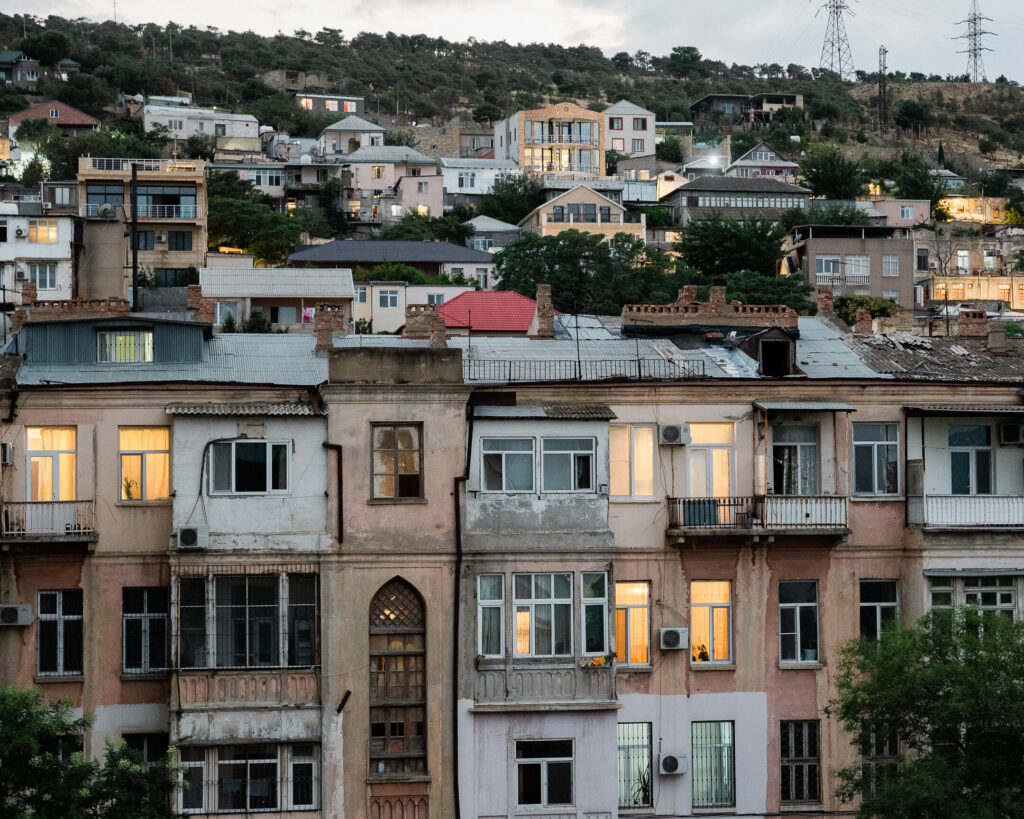



Feel the Real Baku: Immersive Experiences & Local Culture
You’ve never really been to the heart of a country till you visit the local bazaar.
- Yaşıl Bazar (Green Market): While Təzə Bazar is more centrally located, Yaşıl Bazar offers a more authentic and vibrant local market experience. Dive into the colorful chaos of fresh produce, fragrant spices, local cheeses, nuts, dried fruits, and, of course, caviar. It’s a great place for souvenirs, photography, and sampling local delicacies. Our experience: The fruits were decently priced, and while honey was more expensive than in Gabala, it was still a good buy after some haggling.
- Uncover Baku’s Street Art: Keep an eye out for vibrant murals and street art that add splashes of color and creativity to Baku’s urban landscape. While not concentrated in one single area, exploring neighborhoods beyond the immediate center can reveal some impressive pieces. Also, seek out the unique
Underground Art Tunnel at Sahil Metro for an unexpected burst of creativity. - The “Oil Boom” Architecture Walk: Beyond the modern marvels, Baku boasts stunning examples of late 19th and early 20th-century architecture, built during its first oil rush. Stroll along Nizami Street (formerly Torgovaya) and the surrounding avenues to admire grand neo-Moorish, Gothic, and Art Nouveau facades, reflecting the city’s cosmopolitan past.
- Embrace the Chaykhana (Tea House) Culture: Tea is a cornerstone of Azerbaijani social life. Duck into a traditional chaykhana, often adorned with carpets and local decor. Order a pot of strong, black tea, usually served with lemon, sugar cubes, and local sweets. It’s the perfect way to relax, observe local life, and perhaps strike up a conversation.
- Indulge in a Traditional Hamam: For a rejuvenating and authentic cultural experience, visit a traditional Azerbaijani bathhouse (hamam). Many have separate sections or days for men and women. Enjoy a vigorous scrub and a relaxing steam session. Agha Mikayil Hamam in the Old City is a well-regarded option. You might also discover the fascinating
- Yeraltı Hamam (Underground Bath Museum) in Icherisheher, a conserved 17th-century bathhouse now a museum.Culinary Adventures: Azerbaijani cuisine is a tantalizing blend of Middle Eastern, Turkic, and Eastern European influences.
- Must-Try Dishes: Don’t leave without trying Plov (saffron-infused rice with meat or dried fruits), Dolma (stuffed grape leaves or vegetables), various Kebabs, Qutab (savory pancakes filled with cheese, herbs, pumpkin or meat – a cheap and tasty snack!), and hearty Piti (lamb and chickpea stew). For dessert, Pakhlava and Shekerbura are essential. Look for bozbash minced meatballs served in broth and dovga sour-milk soup.
- Food Tours & Cooking Classes: Consider joining a food tour to sample a wide variety of dishes or a cooking class to learn the secrets of Azerbaijani cuisine. While local cuisine tends to be meat-heavy, you’ll find options like fresh salads, vegetarian qutab, and dovga for those seeking plant-based meals.
- Local Eateries: Venture beyond the tourist-centric restaurants and seek out kafas (local eateries) for authentic, home-style meals at reasonable prices.
- Discover Azerbaijani Wine: Azerbaijan has an ancient winemaking tradition that is experiencing a revival. Look for local wines like “Madrasa” or “Bayan Shirey” in restaurants or visit specialized wine shops for a tasting.
Art & Performance: - YARAT Contemporary Art Space: This leading non-profit organization showcases contemporary Azerbaijani and international art through exhibitions, workshops, and events.
- The Workshop of Ali Shamshi: Located in the Old City, his studio is known for its distinctive psychedelic exterior and colorful paintings. A truly unique artistic encounter!
- Azerbaijan State Academic Opera and Ballet Theatre: Even if you don’t catch a performance, admire the stunning architecture of this early 20th-century theatre. If you do have the chance, attending a ballet or opera here is a grand experience.
- Azerbaijan State Philharmonic Hall: For classical and traditional concerts in a spectacular early-20th century rotunda.
- Azerbaijan Drama Theater: Where the country’s finest plays and performances are held.
- Russian Drama Theater: One of Baku’s oldest, opened in 1920, offering classic Russian and Soviet literature performances, plus children’s plays.
- Museum of Modern Art: Explore contemporary Azerbaijani and international art at this impressive museum, offering a different artistic perspective than the Heydar Aliyev Center.
Parks of Baku: Beyond the Boulevard, Baku boasts many beautiful green spaces for respite. - Officer Park: A charming oasis with footpaths, graceful poplars, and whimsical statues of various city scenes like chess players and flower vendors.
- Central Botanical Garden: A peaceful getaway with a collection of over 2000 species of trees, shrubs, and flowering plants.
- Nizami Park in Old Town: One of the oldest public parks in Baku, perfect for unwinding and escaping the city bustle.
- Dede Qorqud Park: A beautiful park with a serene pond, offering a peaceful, less touristy green space.
Souvenir Hunting with a Difference: Beyond the usual trinkets, look for traditional armudu (pear-shaped) tea glasses, intricately painted ceramic pomegranates (a national symbol), copperware, or a small, quality silk scarf with buta (paisley) patterns. - Search for Soviet-Era Mosaics & Sculptures: Keep your eyes peeled for impressive remnants of Baku’s Soviet past in the form of public art, hidden in various neighborhoods.
- Bibi-Heybat Mosque: A stunning reconstructed mosque near Baku Bay, known for its spiritual significance and beautiful architecture. A serene spot for reflection.
Your Practical Toolkit for Baku
Navigating Baku is relatively straightforward with a few tips to know before ahead.
Getting There:
- Heydar Aliyev International Airport (GYD) is modern and well-connected, receiving aircrafts from major airlines globally. The terminal is a 4-star category airport, offering free Wi-Fi, luggage lockers, cafeterias, waiting areas, VIP rooms, and duty-free shopping.
- Check visa requirements for your nationality well in advance. For UAE residents, it’s typically a Visa on Arrival you can also get an e-visa if you want to skip the possible line on arrival.
- You can also get to Baku by land using buses or long-distance trains, notably from Tbilisi, Georgia, with journeys typically taking 15-16 hours including border control.
Getting Around:
- Metro: Baku’s metro is efficient, clean, and very affordable, with 26 stations divided into red, purple, yellow, and green lines. Purchase a BakiKart (rechargeable card for about 2 AZN) for use on the metro and public buses; a single ride costs 0.3 AZN.
- Buses: Modern buses run from 06:00 to 20:00, with waits of 5-15 minutes. Downtown bus travel costs only 0.2 AZN (approx 0.12 USD), and to the outskirts, about 0.35 AZN.
- Taxis & Ride-Hailing: Traditional purple “London” cabs are available. App-based services like Bolt and Uber are widely used and often more convenient and transparent with pricing. Always ensure the meter is on in traditional taxis or agree on the fare beforehand. Keep in mind that in bad weather or during rush hour, fares may increase. Many apps or taxi call centers also offer services in English.
- Walking: The city center, particularly the Old City, Nizami Street, and the Boulevard, is very pedestrian-friendly. We were happy to walk everywhere and discovered so much on foot.
- Cycling: A highly developed network of bicycle rentals makes Baku accessible on two wheels, especially convenient for exploring the 25-kilometer-long Baku Boulevard. Rental prices often include a bike lock.
- Car Rental for Day Trips outside Baku: If you are like us and don’t rely on tours, renting a car is highly recommended for flexibility. We rented a car from Emirate Cars Rent a car Baku. It’s around 125 Manat per day for a Hyundai Elantra, which includes premium insurance (30 AZN), plus a 150 AZN deposit. They have cheaper options too, but this what you might find on a busy day.
Accommodation: Where to Stay in Baku
Baku offers a wide range of options, from luxury international hotels to charming boutique hotels in the Old City and budget-friendly hostels. Staying near the city center or the Boulevard is convenient for sightseeing. We found that Booking.com and Airbnb offered a plethora of choices, and we often book the night before as we tend to move around a lot.
Here are a couple of places we liked for the rooms and staff
- Jeanne d’Arc Guest House
- Tour Hotel Baku 58 AZN with breakfast- Clean, big rooms and a really helpful person at the reception. They also have car rentals available directly at the hotel.
You’ll find countless other options to suit your budget and preferences across the city.
Money:
- The currency is the Azerbaijani Manat (AZN), which maintains a solid rate against the US dollar (approx. 1.7 AZN to 1 USD). Manat is represented by 7 denominations of banknotes and 6 denominations of coins (kapiks).
- Credit cards are widely accepted in hotels, larger restaurants, and shops. Carry cash for smaller vendors, bazaars, some taxis, and tips.
- You can easily exchange money at local banks, as well as at small exchange offices located at the airport, bus stations, railway stations, and in the city center. ATMs are readily available. Tipping is appreciated for good service (around 10% in restaurants).
Language:
- The official language is Azerbaijani (Azeri), a Turkic language. Russian is widely spoken and understood, especially by older generations, as Azerbaijan was part of the Soviet Union.
- English is gaining traction, particularly in tourist areas and among younger people. While you’ll often find menus in English and many waiters, servers, and staff in large shopping complexes are proficient, direct communication can sometimes be a challenge. Learning a few basic Azeri or Russian phrases will be greatly appreciated:
- Salam (Hello)
- Sağ olun (Thank you – Azeri) / Spasibo (Thank you – Russian)
- Hə (Yes – Azeri) / Da (Yes – Russian)
- Yox (No – Azeri) / Nyet (No – Russian)
Connectivity:
- Wi-Fi is common in hotels and cafes. Consider getting a local SIM card (Azercell, Bakcell, Nar) for affordable data access, available at the airport and city shops.
Safety:
- Baku is generally a very safe city for tourists. The government maintains strict public order, and Azerbaijanis are renowned for their hospitality.
- As a precautionary measure, simply keep an eye on your valuables while in crowded places, only ride in certified taxis, and be aware of your surroundings after dark. It’s also advisable not to drink the tap water if you’re only visiting for a short time. Travelers worldwide report feeling safe and comfortable in Baku.
Best Time to Visit:
Spring (April-May) and autumn (September-October) offer the most pleasant weather for exploring, with mild temperatures and sunny skies. Summers (June-August) can be very hot and humid, though we still enjoyed our mid-August visit. We imagine it would be even more lovely in the winter months!

Often Recommended Day Trips from Baku
If you have extra time, consider these incredible excursions:
- Gobustan National Park: A UNESCO World Heritage site, home to thousands of ancient petroglyphs (rock carvings) dating back up to 40,000 years. Also nearby are the fascinating and bizarre mud volcanoes – Azerbaijan has nearly half of the world’s mud volcanoes! If you want to see mud volcanoes Azerbaijan definitely is the place to check this off your list!
- Ateshgah Fire Temple: Located in Surakhani, this pentagonal temple complex was once a sacred site for Zoroastrians and later Hindu pilgrims, built over a natural gas vent that fueled an eternal flame. Consider visiting at dusk for a more mystical experience.
- Yanar Dag (Burning Mountain): Witness a continuously burning natural gas fire on a hillside – anatural phenomenon that gives Azerbaijan its nickname, “Land of Fire.” Be aware that this can be underwhelming; if you go, don’t expect to see more than what is described, it’s a small fire.
- Candy Cane Mountains (Khizi Mountains): Further afield, with stunning, surreal landscapes of vibrantly colored, textured mountains. Reminded us of the rainbow valley hike in Fujairah.
- Qala Archaeological and Ethnographic Museum Complex: An open-air museum showcasing the historical lifestyle of the Absheron Peninsula.
Our Top Food & Drink Recommendations
Baku’s culinary scene is a delightful journey. Read all our top recommendations here in our Baku food guide. It has all the top spots and local delights to try in Baku.
Baku is a city that will surprise and enchant you with its dynamic energy, rich history, and warm hospitality. It’s a place where every corner holds a story, every meal is a celebration, and every encounter leaves a lasting impression. So, pack your curiosity, embrace the adventure, and get ready to discover the many layers of this extraordinary Caspian jewel.


